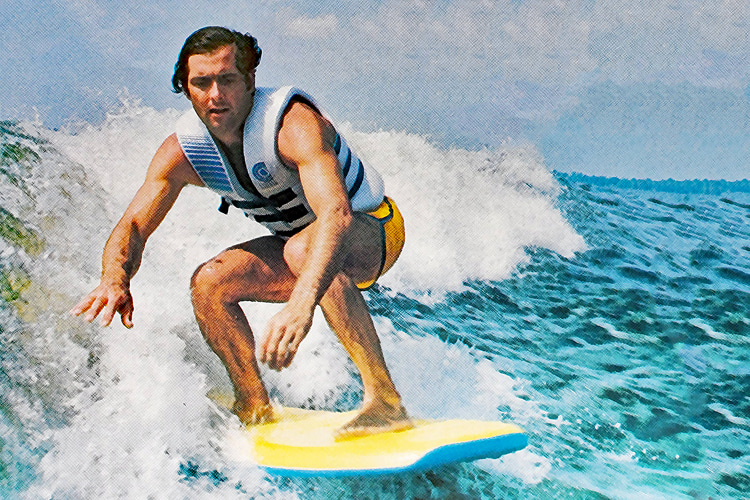He created the Morey Boogie logo and developed advertising campaigns that helped build an iconic brand. Meet Craig Libuse, the legendary Morey Boogie art director.
Libuse was born on August 4, 1946, in Milwaukee.
A waterman from an early age, Craig was raised summers at his grandparents' home on a chain of lakes in Wisconsin.
He became a good swimmer and boater at a young age and felt a special kinship to the liquid world.
At the age of nine, he moved from the Midwest to Southern California when his father, an Air Force pilot, was transferred to Riverside in 1954.
He and his best friend Hugh took up skin diving, mat surfing, skimboarding, and bodysurfing whenever they could hitch a ride to Laguna Beach or Newport.
After graduating from UCLA in 1968 with a degree in Industrial Design and Graphic Arts, completing four-year military service, and discovering kneeboarding, he met the man with whom they would make history - Tom Morey.
The rest is history.
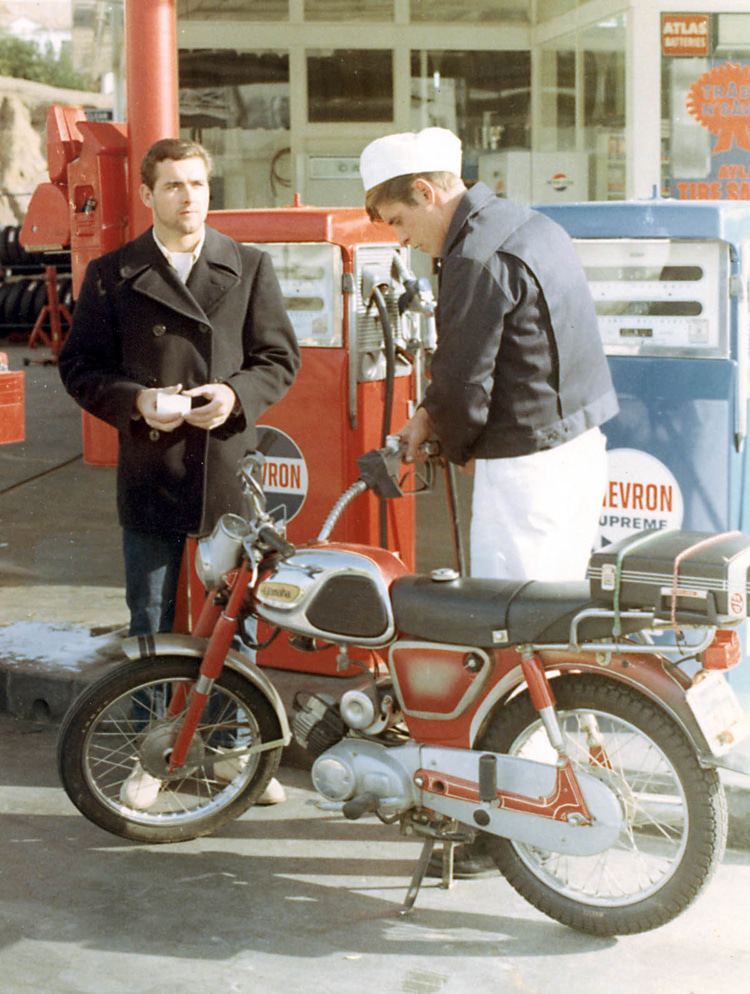
An Iconic Logo
As Tom Morey and the company grew and moved into a small factory facility on Oak Street in Carlsbad, Craig offered to help Tom design a logo for the Morey Boogie Board.
"Tom wanted an image that showed what could be a boy or girl with long hair blending into the wave as they became part of the ocean," Libuse tells SurferToday.
The final logo became an iconic image for the famous bodyboard for many years, and the $25 Craig was paid for the rights to it became his first paycheck with Morey Boogie.
Despite keeping a low profile, Craig Libuse is a key personality in the development of the Morey Boogie board, a timeless water sports brand.
In 1974, at the first Morey Boogie contest held at Huntington Beach, Libuse even competed and finished runner-up in the senior men's division.
He may not have won the event, but his contribution to the sport of bodyboarding is immense.
Discover the secrets behind the Morey Boogie brand through the eyes of its art director.
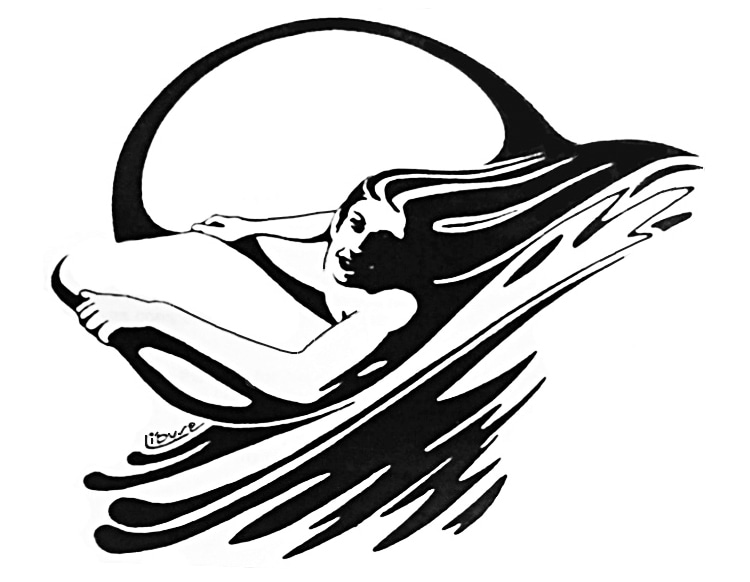
Where did you ride your first waves?
At Agate Street in Laguna Beach. We bodysurfed and rode surf mats.
My friend's mom often drove us down the hour drive - before freeways - from Riverside to get out of the heat in the summer.
We also liked skin diving, spearfishing, skimboarding, exploring the tide pools, and rock cliff diving.
You were also into water skiing. Were there many water skiers who were also into surfing, or was it mainly an inland thing?
Water skiing was pretty much a separate deal back then - an "inland" thing. You needed a boat and a lake.
Now, with wake surfing becoming big, the two have merged a little, but back then, there weren't a lot of crossovers.
Now, with the right boat, you can surf on any lake, if you call a one-to-two-foot wave, surfing.
When Kransco purchased Skurfer from Tony Finn, it also added to the number of people who participated in versions of both sports.
One of my favorite Kransco projects was Boat Boogie.
It was a larger, down-rail, square-nosed version of a boogie board that was made to be ridden behind a boat on your knees.
They didn't have a knee strap like the Hydroslide kneeboard, but I figured out a way to add one so I could get air off the wake without coming off the board.
It could also be ridden standing up, like an early wakeboard.
Kransco did a promo photoshoot for the product at Cypress Gardens, Florida.
They hired the ski show's talent, camera boat, and film editing staff to make a continuous loop film to play at trade shows.
I got to direct the water skiing talent.
Oddly, as good as they were at riding skis, the guy and girl we chose to ride in the filming just couldn't get the hang of stand-up riding.
They loaded up two huge water tanks in the camera boat to make a three-foot wake and asked me to go out there and show the skiers how to surf the wake.
I thought it was just a demo, but I dropped the rope, got a good long ride, and the director just said, "We'll use that. Next!"
So, I got a featured spot in the final edited film surfing a Boat Boogie.
I also posed as a "dad," pulling his kids behind a small family ski boat.
The trip was a real highlight for me, and I still love the two Boat Boogies I still have.
I taught all my kids and grandkids to ski, starting them out of a Boat Boogie.
I truly regret the product was never as successful as I felt it should be, but the "Boogie" name had not made waves yet in the center of the country, so we couldn't really cash in on the magic of the term.
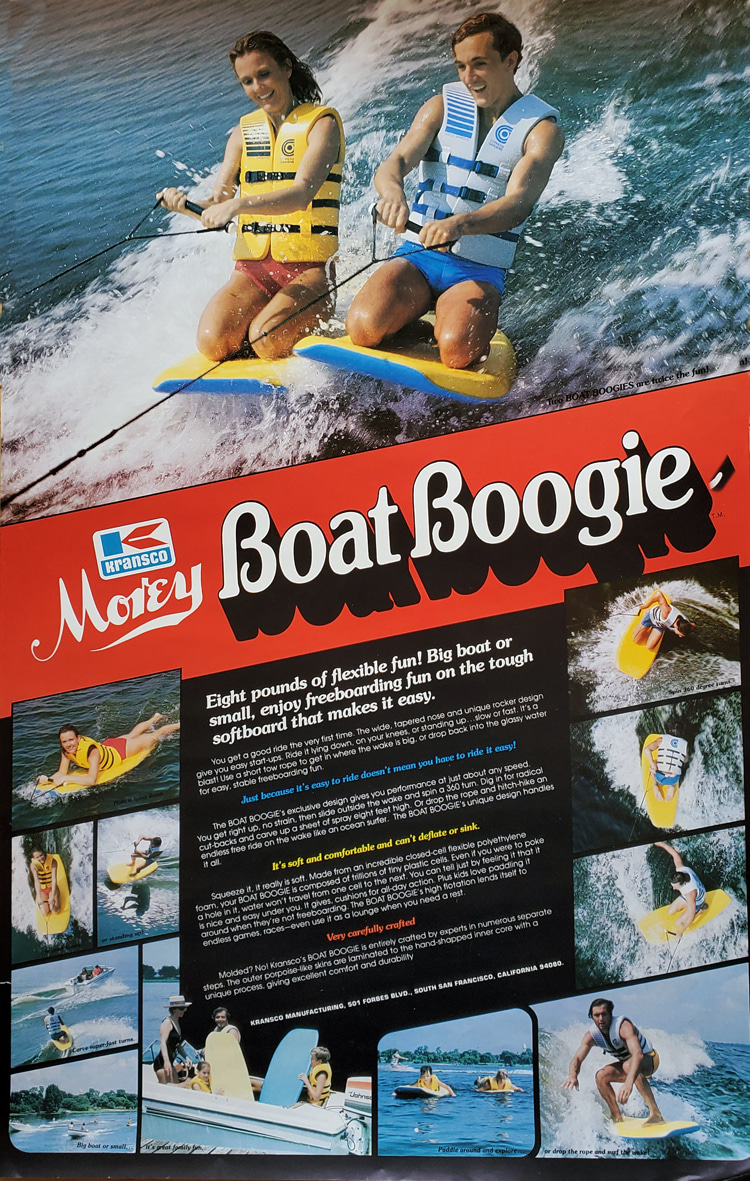
Tell us more about the surfing scene in Southern California in the late 1950s and early 1960s.
Being young teenage mat surfers and bodysurfers, we were kind of considered "kooks" or "groms."
"Real" boards were huge and expensive, and it wasn't until our senior year in high school that my friend and I were able to afford and have a way to transport a 10-foot-plus board to the beach.
We eventually got a used 10'2" Wardy longboard, which was stolen out of my friend's garage, to be replaced by a similarly huge Hobie.
We would drive to Doheney to learn to ride those huge, heavy logs.
We never owned a true Woodie either, but my friend's dad bought him his first car, which was a former San Bernardino county surveyor's GMC Carryall purchased at a county auction for $400 - the Chevy version was called a Suburban.
It was bright orange, and the county insignia on the doors were spray-painted over with black.
It had a big six and Granny low gears and would go about anywhere a jeep could go. It had plenty of room for boards.
We eventually sold it to my brother's group of friends for $50.
They always carried a case of Pep Boys oil in the back by then because they had to put more oil in it than gas.
Those vehicles are collectible now, but back then - believe me - it was not a very cool ride, but then neither were Woodies.
That's why surfers owned them - nobody else wanted them, so they were cheap and could carry boards or be slept in.
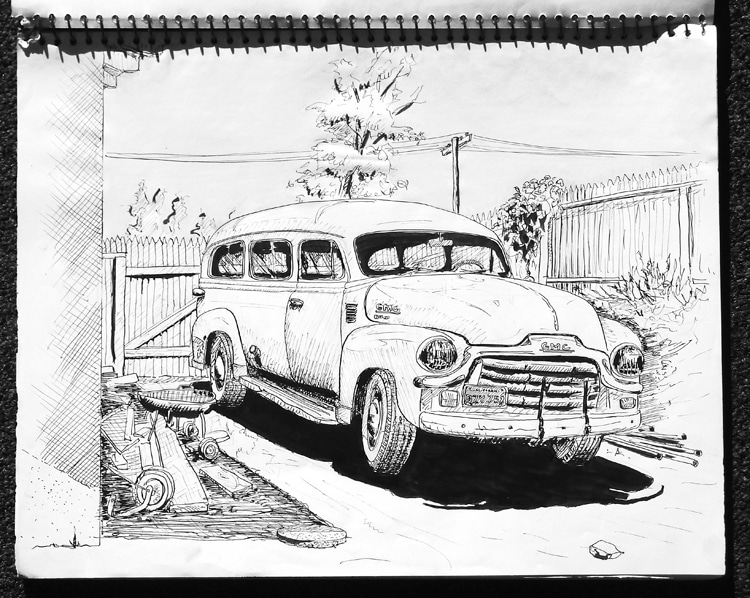
You started as a stand-up surfer but fell in love with the boogie board. How do you describe the differences between both wave-riding experiences?
Riding a boogie board for the first time in 1974 or so was a life-changing experience.
At the time, my new wife and I were using up our honeymoon gift money, living in a small apartment above Tamarack Beach in Carlsbad.
We managed to stretch the money my grandfather gave us for a week in Acapulco to last for six months at the beach instead.
I had just left the Air Force and had sold back 60 days' worth of leave, which also helped. For reference, an apartment on Chinquapin by the railroad tracks a block from the beach was rented for $125 a month.
I was still using my custom-made beaver-tail skin diving wetsuit jacket as custom surfing suits were just becoming popular.
We were riding kneeboards, which were cheap, and you could wear swim fins, which helped my wife catch waves easier, but they were hard fiberglass, and I worried about her getting her teeth knocked out.
When I saw two kids on early, large, and very flexible soft foam boards, I could immediately see that it was something special.
They were tearing it up and having a ball!
I found out from them that a guy named Tom Morey, a few blocks down the coast highway, made them in his garage.
The kids were a teenage Bobby Szabad and his friend Rick Broderson, who soon became Tom's first production employees when he opened the first plant on Oak Street in Carlsbad.
Tom shaped a blank for my wife while I watched.
He then gave me the blank, two skins, a roll of electrical tape to cover the seams, and a set of instructions that included the right kind of contact cement to buy to glue on the skins.
I followed the instructions carefully and ended up with a very nice board, which we couldn't wait to try out.
The instructions were written and illustrated by Tom and were the first clue that this guy had a way with words and ideas.
After riding my wife's, I immediately went back to Tom's and ordered another one.
We sold the kneeboards.
We were not just hooked; we were disciples, touting the boards to everyone who saw them.
In an April 10, 1975 article in the Carlsbad Journal newspaper, I went out on a limb and was quoted as saying, "I think it'll catch on."
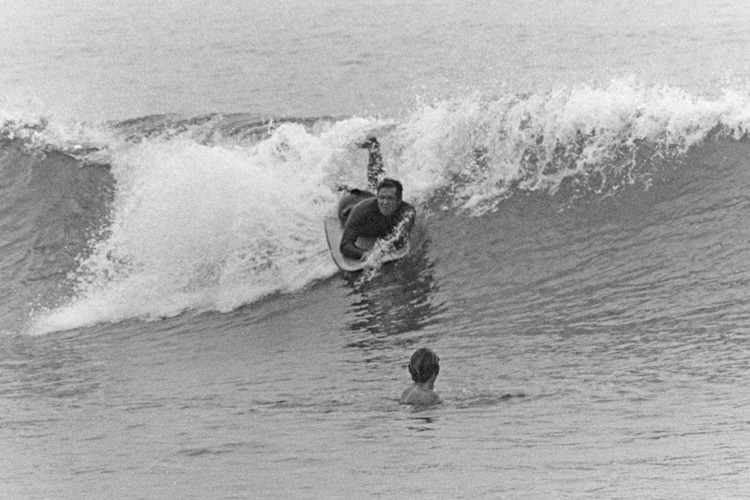
How was it to work with Tom Morey? How would you describe your professional relationship with the inventor of the bodyboard?
Tom rarely raises his voice. He doesn't have to - his ideas speak for him.
He is a brilliant but very approachable, easy guy to deal with. He would have made a good preacher.
In fact, when I first met him, he was the leader of a local group of young people devoted to the Bahá'í Faith, and when you went to work for Tom, you were given a book on the life of Bahá'u'lláh, the faith's prophet.
It was all very low-key, with no pressure, but the benign philosophy was a good fit for Tom's talents and beliefs.
In fact, many didn't realize it at the time, but Tom's method of applying model numbers to the boards used the Bahá'í calendar year, like "132 BE", standing for Bahá'í Era.
Most people just thought it was a model number.
Tom, a math major from the University of Southern California, is brilliant. It doesn't take long to talk with him to figure this out.
He seems to pull endless analogies into the conversation, each one spot-on to make his point.
It's hard to tell if they were spur of the moment or well thought out, but they flow one after another, making you feel like you should be writing this down.
His best analogies often relate to surfing and waves.
In his office, he kept a Rolodex file of sayings that guided his life and business.
The pages ran the gamut from how to deal with employees to how to make the business progress.
They should be collected into a book. The Rolodex was donated to the California Surf Museum in Oceanside.
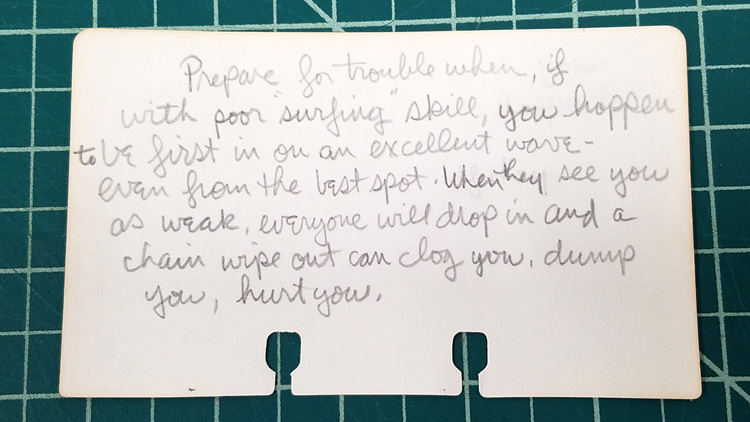
Did he get involved - hands-on - in the development of the visual and graphic identity of the materials you were creating?
Tom was very hands-on with the artistic decisions about the ads and posters.
When I started working there, he gave me two books to read: "Confessions of an Advertising Man" by David Ogilvy and "Positioning: The Battle for Your Mind" by Al Ries and Jack Trout.
These books helped shape my entire career in advertising. I still own them.
Some of the things Tom stressed were the extensive use of advertising copy that promised benefits rather than features - a powerful headline and copy divided by subheadings.
He was also a big believer in testimonials from customers.
One of his other ideas used in some of the early ads was to have a photo in a box shaped like a TV screen. He felt that people trusted what they saw on TV.
He liked the fonts called Souvenir bold italic for headlines and Avant Garde for body copy. We stuck with those for many years for posters, instructions, ads, etc.
Even the script word "Morey" in the slogan "Surf Morey for Good Feeling" Tom was designed to resemble the "Coke" script, which is known and trusted as a brand around the world.
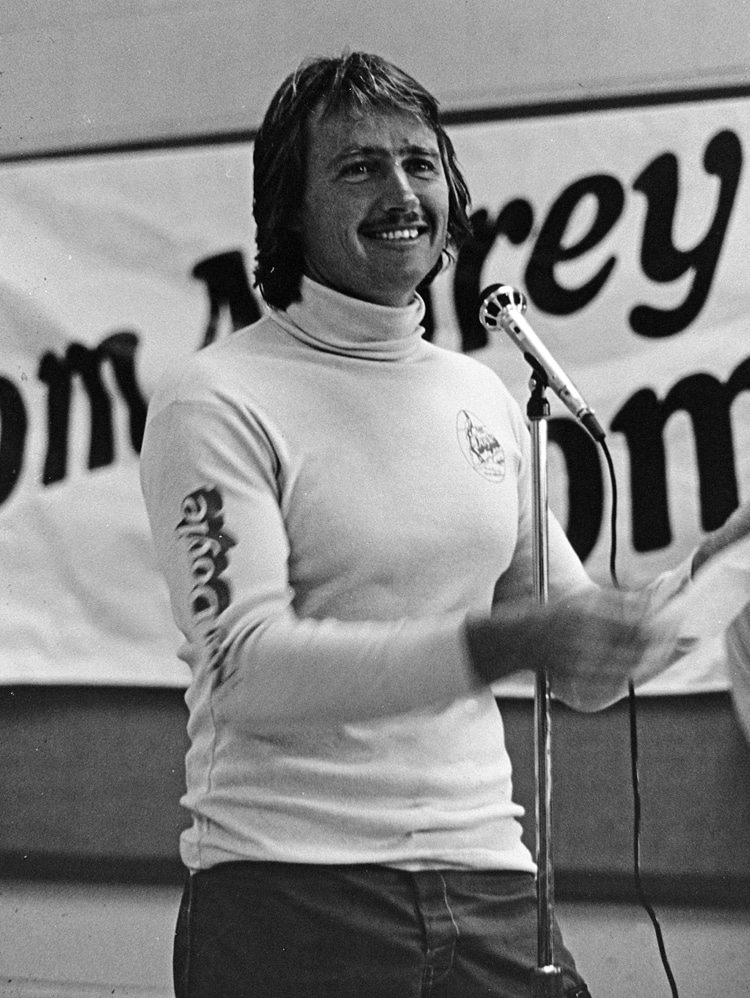
What was your overall vision for the brand?
As the brand grew in recognition, Tom was constantly encouraging the sales staff to think bigger.
I never had the feeling that we were reaching an endpoint where sales would start dropping off.
The future was unlimited, or at least demand was unlimited.
The trouble with many small start-up companies is getting financing.
Selling the idea of a boogie board to a surfer was easy - to a banker, not so much.
For years, it seemed that we were teetering on the edge of success, held back by having to take whatever money was in receivables and immediately use it to buy more materials to keep up with demand.
Sometimes, it was a race to the bank on Friday to cash your paycheck. Selling the company solved this problem.
Kransco was a big but very reputable company out of San Francisco run by two millionaires, John Rosekrans and John Bowes.
Friends through their youth and college, they started with a company that sold SwimWays pool lounges but soon moved on to purchasing successful brands that need an infusion of cash to get them to their full potential.
Instead of a Nissan pickup truck going up to San Clemente every few days to pick up however much foam we could afford, they could order foam from Dow Chemical by the railroad car.
They also brought along a legal staff that helped protect the brand name and hired experts in the chemical industry to advance the sport's state-of-the-art.
One example that is rarely mentioned is Dow materials engineer Steve Schneider.
He was the one who discovered that DuPont Surlyn, the super-tough material that golf ball skins are made from, could be bonded to foam and used on the bottom of a board.
Hence, the slick bottom used on the ground-breaking Mach 7-7 board was born.
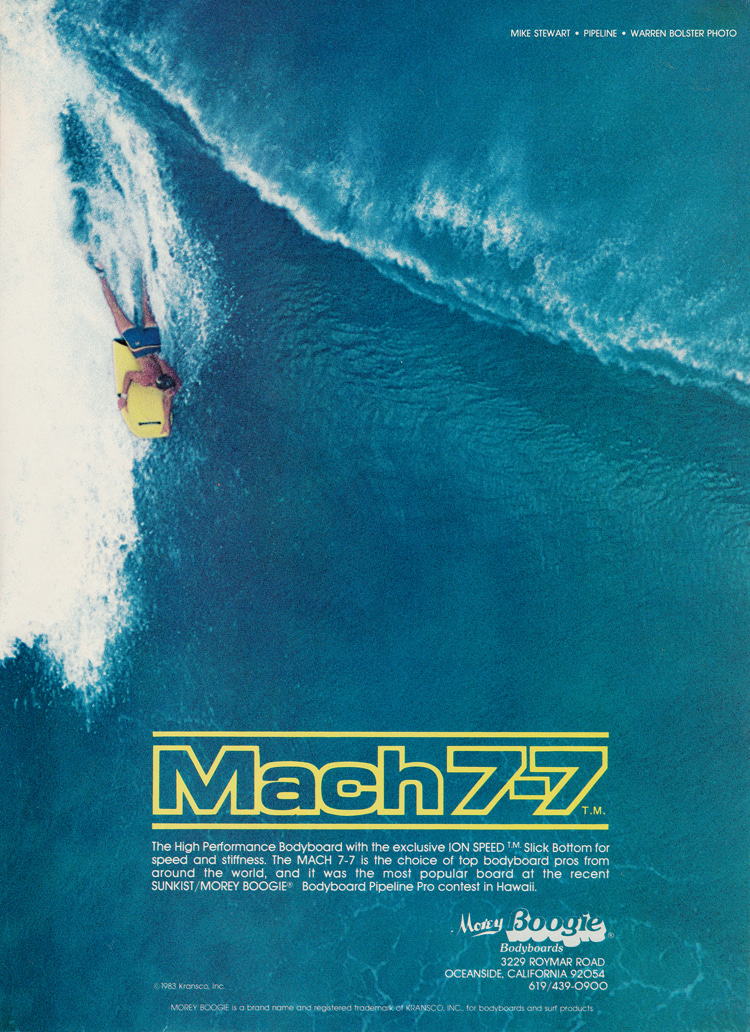
Did Morey Boogie have a well-identified target market?
The extent of the market seemed to be constantly expanding.
At first, it was seen as a toy for young kids just getting started in surfing.
It was expected that riders would get hooked on the ocean and riding waves and would then move on to buy "real" surfboards.
What was a pleasant surprise was the devotion many of the early riders showed to the product.
They felt no need to ride a stand-up board.
As riders like Jack Lindholm and Mike Stewart began getting rides on huge waves and doing maneuvers impossible on a surfboard, a second group formed.
They wanted to be the best at this new sport.
Competitions formed around the world, from England to Brazil, and the goal was to be the best boogie rider.
They had no interest in transitioning to hard surfboards.
These new riders had a vehicle that challenged them endlessly and was affordable, transportable, and just plain fun.
As they aged, they bought bodyboards for their kids and, more than might have been anticipated, were staying thrilled with the down-low, intimate type of riding the boogie brought.
I recall a time when, at a sales meeting, Tom encouraged the salesmen to think big.
"Ask for the sale. If you ask them to buy ten, they will buy five. Ask for 100. When the laughter settles down, asking for 50 will seem reasonable."
He also said, "Someday, you will find a boogie board in every garage."
Not long after winning Sears as our first big customer, you could walk down any alleyway by the beach in Newport and see three or four boogies in every garage.
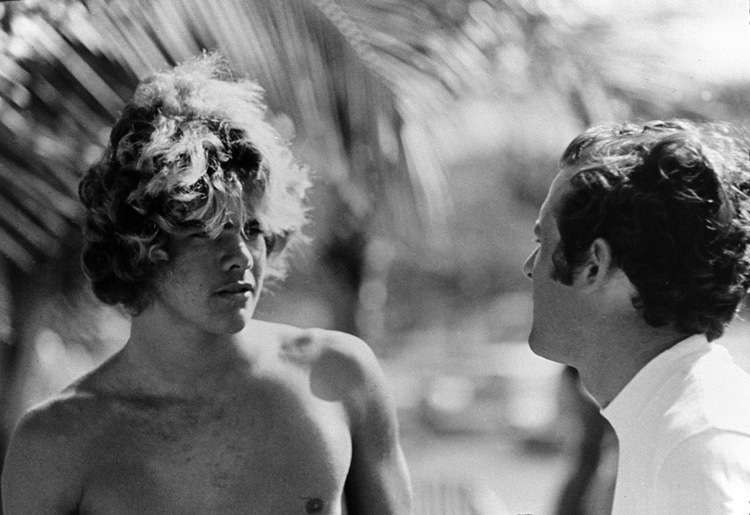
How would you describe the status quo of concepts like marketing and branding in the 1960s?
Most of it was pretty unsophisticated, but some were very savvy.
The surf and skate industry was run by a bunch of kids willing to break the rules visually.
Surf magazines were a new thing.
Printing was expensive, so the first magazines tended to be rather conservative, featuring scenic photos of waves and dramatic rides.
There was less attention to the personalities of the sport and more on the hardware and locations.
As the sport grew, more focus moved to individual personalities.
The radical layouts and images of the skate magazines soon invaded much of the surf scene. Bathing suit ads stayed pretty conservative.
One of the biggest influences to take place in the middle 1960s was the introduction of the movie "The Endless Summer" by Bruce Brown.
After that, "Everybody's Goin' Surfin.'"
I can't say I was much of a fan of the "Gidget" type of surf movies, but "The Endless Summer" told the real story.
Just hearing the theme music from that movie makes me want to grab a board.
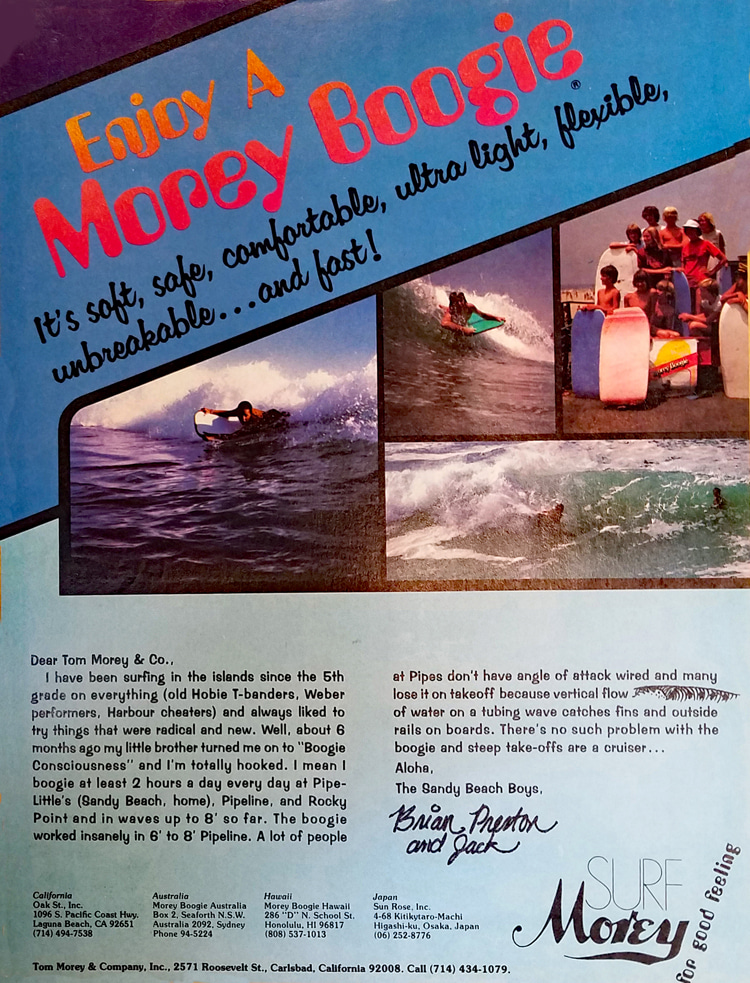
What were the media platforms chosen for promoting the Morey Boogie?
Initially, we stayed pretty much with the leaders in the surf magazine industry, like Surfer and Surfing magazines.
Other small local publications like Breakout popped up here and there.
Ad costs were lower, but they reached the hardcore of the sport, so we occasionally ran ads there, too.
One TV ad was tried, but that's a pretty expensive media, and results can be hard to track.
A number of early riders have mentioned that they only bought the newest copy of the surf magazines if there was a new boogie ad in it.
We tried to introduce new ads every month or two to feed that stoke.
Once the surf industry realized there was enough market to devote an entire magazine to it, the Bodyboarding magazine came out, and we concentrated more on that targeted audience.
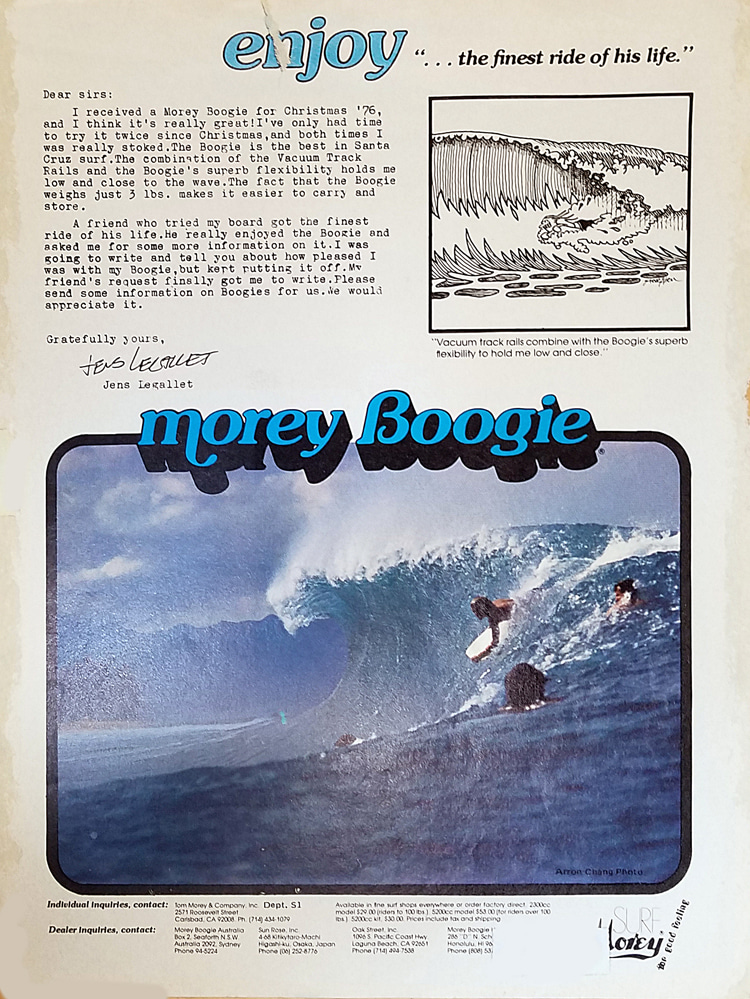
Tell us a bit more about the balance between fonts, illustrations, photography, color palette, and words adopted in your creations.
Tom was a big fan of the word "Enjoy." He also felt "Good" was more believable than "Great!"
He was never as happy promoting high performance as he was promoting the simple fun of riding a wave.
As he said, "You wouldn't sell the pleasures of snow skiing by showing someone going off a 90-meter ski jump."
Photos told most of the story.
The headline was next, with a recognizable red stripe that wrapped across the ads and the posters that came with the board.
My original logo lasted in ads, shirts, and posters for more years than I expected.
The Avant Garde and Souvenir fonts were also a constant.
Not much of what we had to advertise required illustrations to understand - it was more about photography.
I give a lot of credit to early surf photographers like Warren Bolster, Mike Moir, Aaron Chang, Brian Bielmann, and others.
They were getting bigger payoffs shooting the established stars for the main surfing magazines, but if they got a chance, they'd shoot some boogie riders and submit it to us, knowing we couldn't pay what the bigger advertisers were willing to cough up.
Their early support really helped, and I tried to make it up later as the company had more success.
I had great respect for those who paddle out in the big waves, risking their expensive cameras - and sometimes their lives - to get "the shot."
I think they wanted to see Tom be successful, and they also appreciated how far the younger generation of boogie riders was pushing the sport.
The Morey Boogie was a fun product, and everyone wanted to be a part of it.
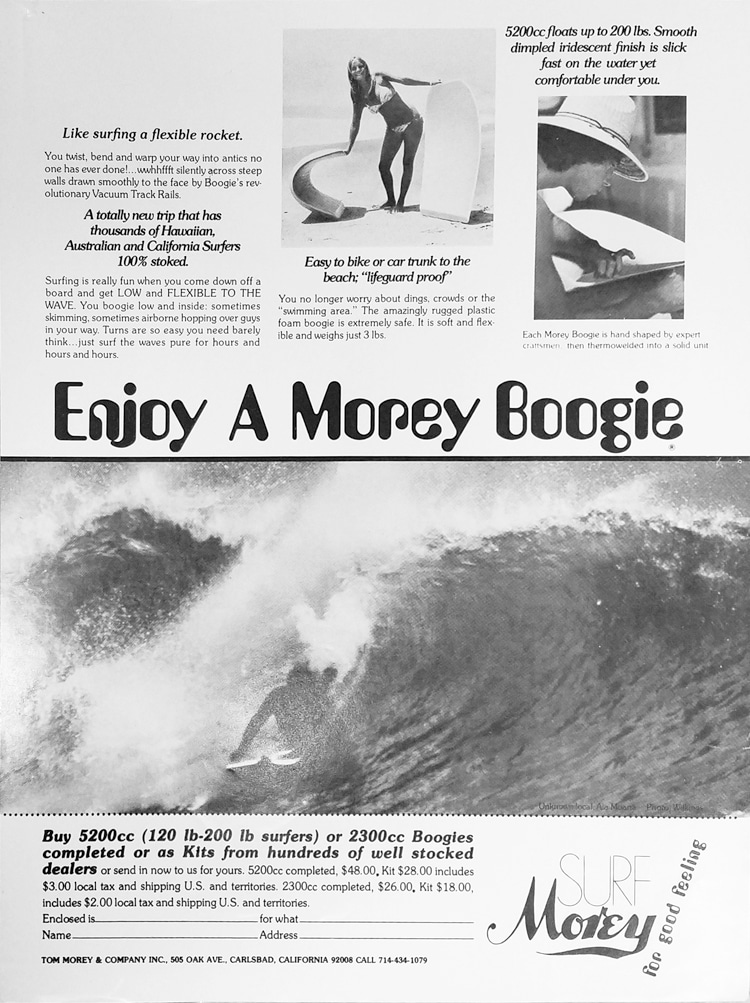
Were you aware of the revolution that was taking place with the introduction and success of the Morey Boogie? And did you make graphic adjustments to the commercial inputs you were receiving?
We were all amazed at the success of the Morey Boogie board. At times, it was like a runaway train.
People grew with the company.
One day, we'd hire a 15-year-old kid to get orders together for UPS and ship 20 or 30 boards a day.
Six months later, this same kid is in charge of a shipping department shipping thousands of dollars worth of product daily.
He could never have walked into that job now, but he had grown with it.
It was pretty much the same with me - right place, right time. I felt I had a presence and responsibility out of all proportion to my talent at the time.
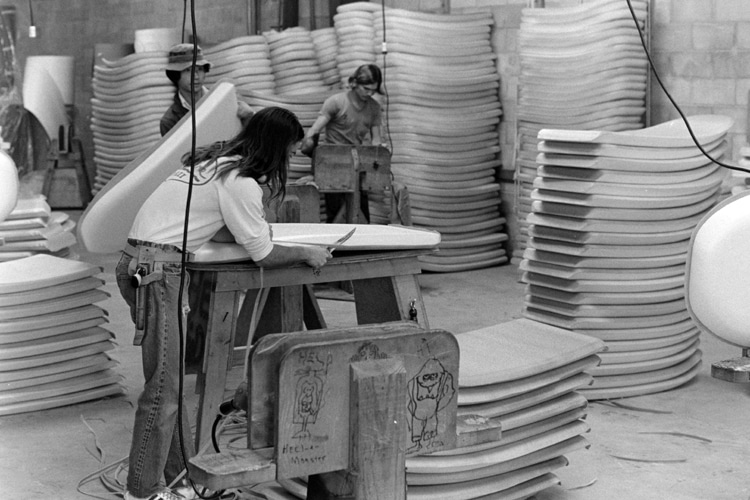
You were the Morey Boogie art director for 15 years. How would you describe the evolution of the brand and the corporate identity throughout those golden years?
It seemed we were always trying to catch up to the success of the product.
We managed to retain the brand's integrity once we figured out it was almost getting away from us.
Kransco's legal department realized we were getting in danger of the "Boogie" name becoming generic and sent the necessary communications to infringers on the brand.
I don't feel we ever had to compromise the quality of the product.
Naturally, there were times when bad batches of material, discontinued materials we had come to depend on, or new processes had to be worked out, but the company always stood behind the quality.
I think that we were perceived as a company that really cared that our customers were getting a good product and that we cared they were having fun with it.
I think I was a fairly conservative steward of the brand and tried to reinforce its successes rather than try to push it into new areas before it was ready.
I hope our particular combination of talents - Tom's and mine - blended well, and we were always perceived as a class organization.
It's not often you get a chance to help develop a product that is also a sport and a lifestyle.
It was nice to represent a product that I never had to apologize for.
Why and exactly when did you leave Morey Boogie? What have you done since leaving the company?
During the years I worked as a contractor for Tom Morey and later for Kransco, growth was constant.
Once Kransco took over the production and development of the product line, they were also still engaged in buying other solid brand names, primarily in the water sports industry, and I was tasked to work with those brands as well.
As they purchased Skurfer, Hydroslide, and Tube-N-It, I got to expand into water ski-related fields that I had always loved.
When they purchased Pines of America (Power Wheels), I didn't have much to do with that, but when they purchased Wham-O, that was the beginning of the end for me.
Wham-O was already a huge, famous multi-brand company (Hula Hoops, Slip' N Slide, Frisbee, etc.) and had its own marketing department in San Gabriel, California.
They farmed out occasional work to me, but I was becoming redundant.
I also was disappointed that their marketing department decided to "cut the hair" on the kid in my original logo to "butch him up a bit."
Lucky for me, it was also a time I was offered a very generous position with another company that had actually been one of my first clients as a new graphic artist.
The owner and I had been friends for years.
Their success had grown to the point where I could no longer handle all the work as an outside contractor and still take on other clients.
After 23 years of running my own studio, it was looking pretty attractive to get down to having just one boss instead of 50, paid vacation, and medical benefits.
I accepted the position of marketing director in 1996, working for a company that manufactures precision miniature machine tools.
The owner also started a foundation to reward precision craftsmanship and, though retired since 2016, I still hold a position as president of the board of directors of his foundation and executive director of the museum he started in Carlsbad, California, to honor craftsmanship at the small end of the size scale - The Miniature Engineering Craftsmanship Museum (www.craftsmanshipmuseum.com).
Joe Martin passed away a few years ago, but Sherline Products is still producing beautiful manual and CNC lathes and mills for hobbyists and the medical and prototype industries.
I bought a house on a beautiful lake in Tennessee, and I am enjoying the beauty of a part of the country I had never explored before.
Now, I find myself into waterfalls.
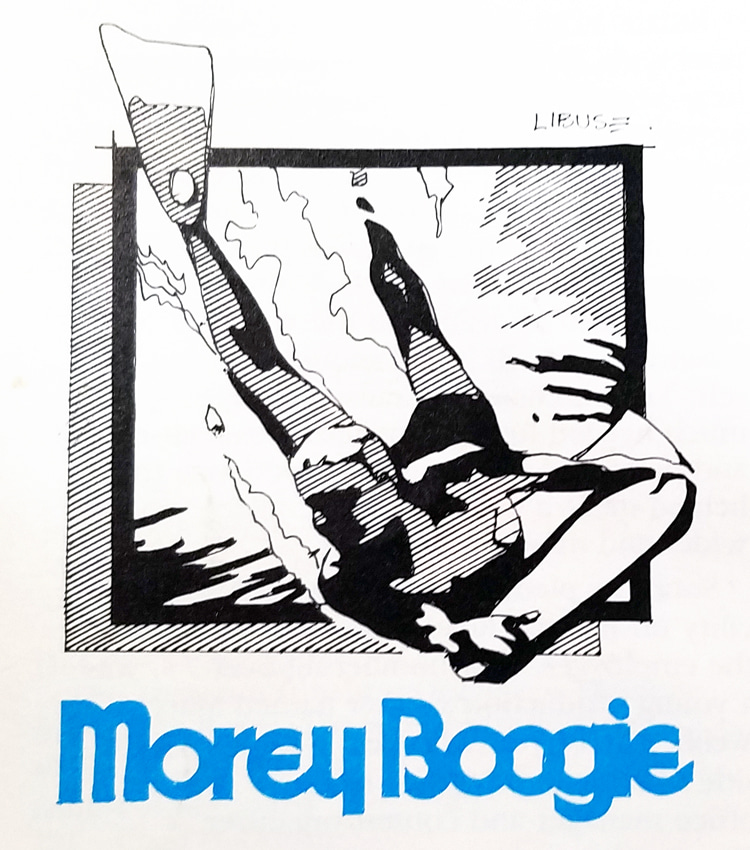
What was it like to work with Hobart Alter and Hobie Cat?
I actually only met Hobie in person once.
By the time I was doing work for Hobie Cat, he was pretty much out of the management picture.
My main contacts were Bob Brown and Bill Baldwin in sales and engineering and Bonnie Hepburn at the Hobie Hotline magazine.
I did many t-shirt designs for them as well as posters and annual calendars.
They were by then owned by the Coleman Corporation but had a big enough budget to be able to do printing jobs in a first-class manner.
That company was parallel in many ways to Morey Boogie in that they had an inspirational founder and produced a quality product that brought fun to millions.
I owned a Hobie 14 for a time.
In today's world, is industrial design more critical and relevant when selling products and services compared to the 1960s?
I think the advent of computer-aided design (CAD) and computer-aided manufacturing (CAM) has made good industrial design even more important and accessible to the public.
If you think of industrial design as the way products are made so they are attractive, safe, and comfortable to use, these new technologies make it much easier.
A CNC machine doesn't care if it is cutting a straight line or a delicate curve.
It's just code.
With 3D printing and AutoCad, new prototypes can be developed almost instantly, and they can be shaped just as they should, unhindered by worries about generating difficult shapes.
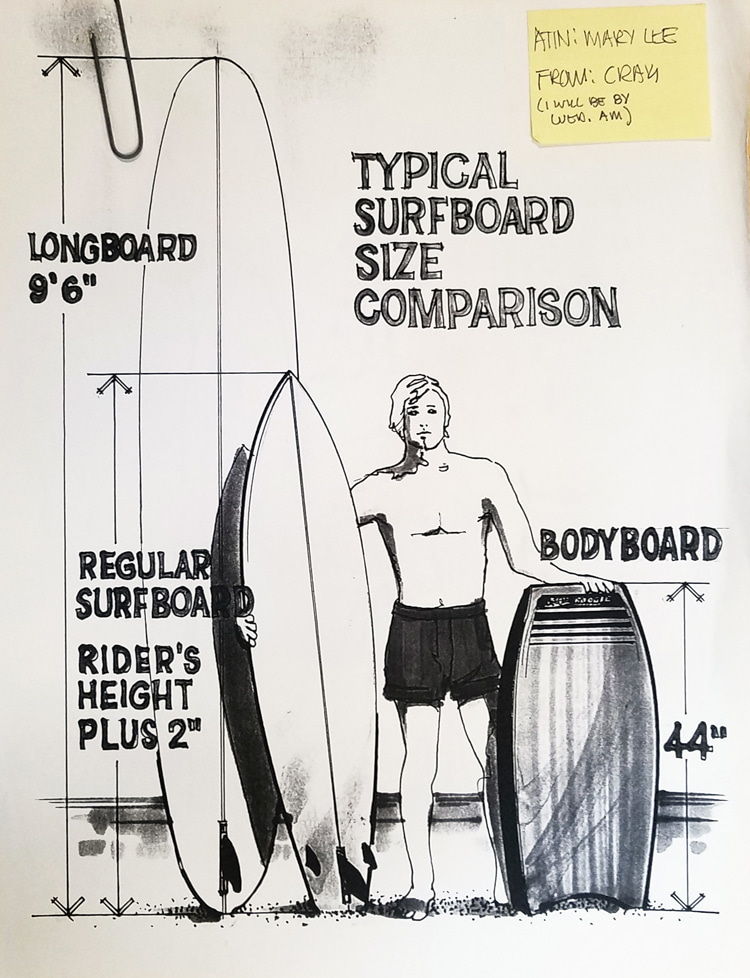
Do you still draw and sketch much?
No. At 74, my drawing skills have gotten pretty shaky.
I work mostly through the computer now. It smooths out my frailties.
That said, I am concentrating now mainly on landscape photography, where the camera and computer are my tools.
How would you describe the marketing and visual patterns you see in contemporary water sports brands and companies?
I am a lover of classic boats, and I must say I am not finding the new crop of wake surfing and wakeboarding boats attractive.
Like the ATVs and hot bikes, I see they seem to be trying to make everything look like a transformer with unnecessary sharp edges, flaps, and fins everywhere.
I am also sorry to see the water ski industry dying out - you hardly ever see a slalom skier anymore.
Everyone wants to just sit on a tube and get slammed around.
No skill there.
It's odd to see people invest $100,000 in a wake boat and then tow six-year-olds around on a tube.
I'll take a 1955 Chris-Craft Riviera any day.
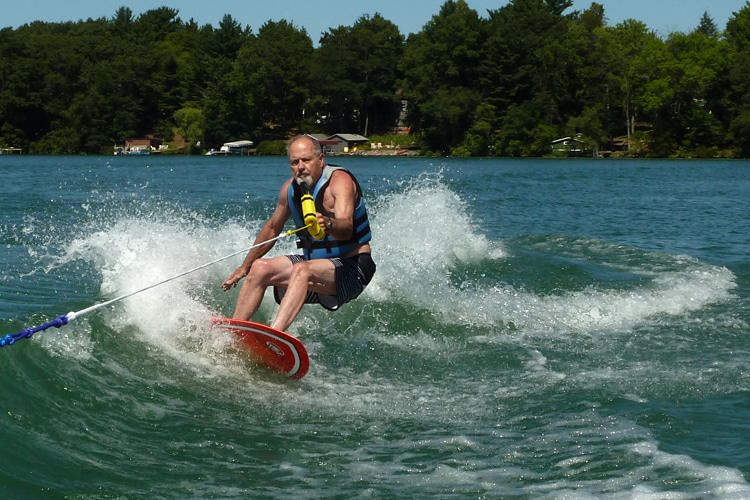
Do you feel that your work helped boost the sport of bodyboarding?
I certainly hope so.
I was in love with the product and the people who use it from the beginning, and I hope my love for them showed through the face we presented to the world.
I feel good thinking I had a small part in all the fun people have experienced riding the ocean waves of this great product.
